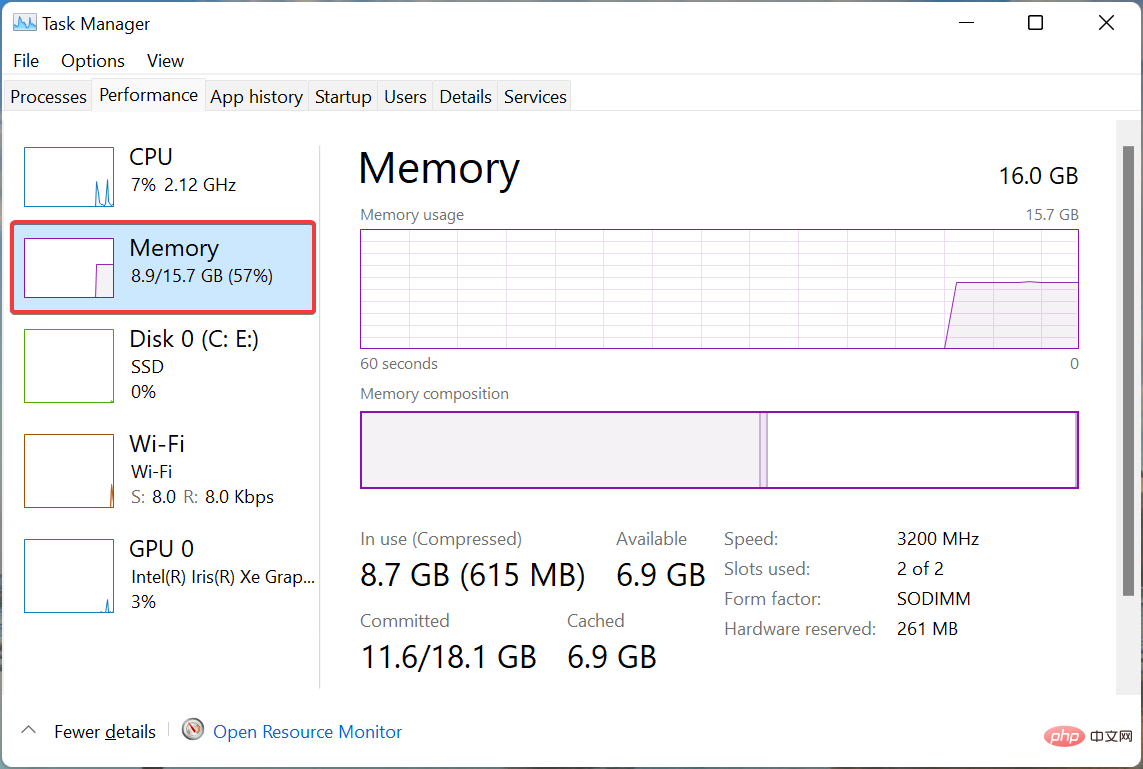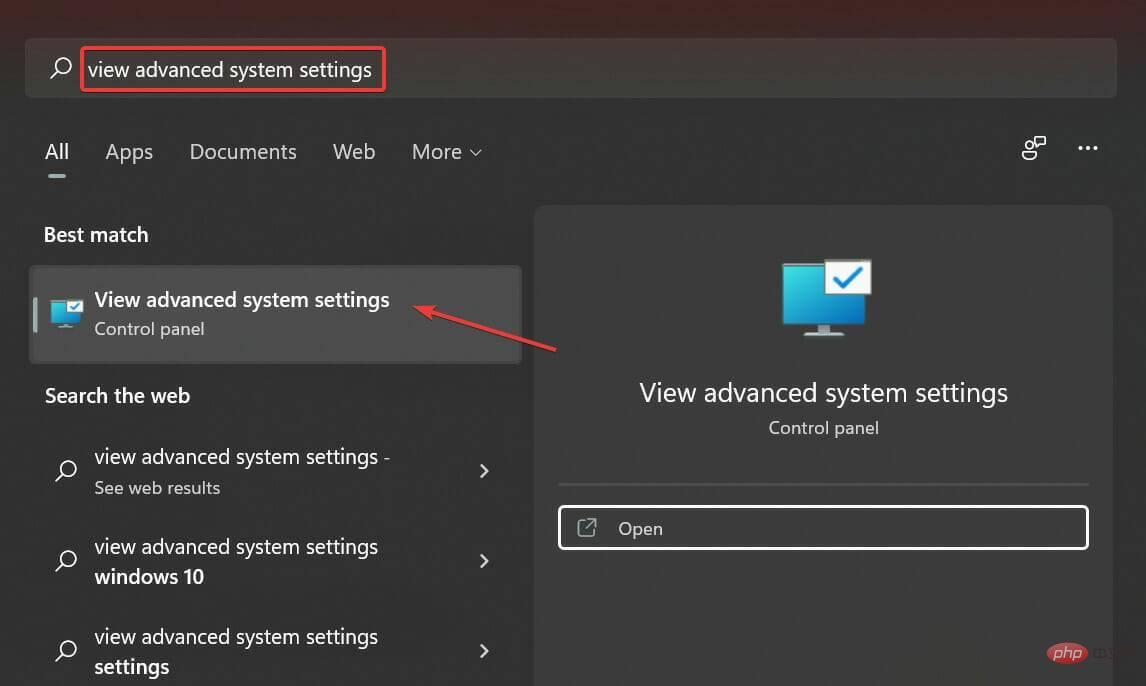
Explore the different roles of Java heap and stack in memory management
Java is an object-oriented programming language with automatic memory management features. In Java, memory is divided into two storage structures: heap and stack. Heap and stack have different roles and characteristics in memory management. This article will delve into the different roles of the Java heap and stack and illustrate them with specific code examples.
- Java Heap (Heap)
The Java heap is a piece of memory managed by the Java virtual machine and is used to store instances and arrays of objects. All objects created with the keyword "new" are stored in the heap. The heap is the most commonly used storage area in Java programs and is also the largest storage area.
The allocation and recycling of the Java heap is automatically completed by the Java virtual machine. When a program creates a new object, the Java virtual machine allocates memory for the object in the heap and returns a reference to the object to the program. When the object is no longer referenced, the Java virtual machine will automatically reclaim this memory and perform garbage collection.
The characteristic of the heap is that it can dynamically allocate memory, and the size is determined by the program. Objects in the heap can be shared by multiple threads, so the thread safety of objects in the heap needs to be considered in multi-threaded programming.
The following is a sample code that demonstrates the use of the Java heap:
public class HeapExample {
public static void main(String[] args) {
// 使用new关键字在堆中创建一个对象
Person person = new Person("Tom", 20);
}
}
class Person {
private String name;
private int age;
public Person(String name, int age) {
this.name = name;
this.age = age;
}
}In the above code, a Person object is created in the heap by using the keyword "new". The object is allocated a piece of memory in the heap, where name and age are the instance variables of the object. After the program is executed, the Java virtual machine automatically reclaims this memory.
- Java Stack (Stack)
Java stack is usually used to store method calls executed by threads and local variables in method execution. Each thread corresponds to a stack, and the data in the stack is managed in a "last in, first out" manner.
In the Java stack, each thread has an independent stack frame. The stack frame is used to store a method's local variables, operand stack, dynamic link, method exit and other information. When a method is called, the Java virtual machine creates a new stack frame and pushes it onto the stack of the current thread. After the method execution is completed, the stack frame is popped, returns to the previous stack frame, and continues execution.
The characteristic of the Java stack is that the life cycle is consistent with the thread. When the thread terminates, the data in the stack will be destroyed immediately. The size of the stack is limited and is set by the Java virtual machine at startup.
The following is a sample code that demonstrates the use of the Java stack:
public class StackExample {
public static void main(String[] args) {
int result = add(3, 4);
System.out.println("Add result: " + result);
}
public static int add(int a, int b) {
int sum = a + b;
return sum;
}
}In the above code, the add method is a simple addition operation, receiving two parameters a and b, and returning Their sum. When the program executes the add method, the Java virtual machine creates a new stack frame and pushes the method parameters a and b onto the stack. After the method execution is completed, the stack frame is popped and returned to the caller.
Through the above sample code, we can clearly see the different roles of the heap and stack in Java memory management. The heap is used to store objects, and dynamically allocate and recycle memory; while the stack is used to store local variables of methods and related information about method calls to implement method calls and returns.
It should be noted that heap and stack have their own advantages and disadvantages in memory management. The heap can dynamically allocate memory and has high flexibility, but allocating and recycling memory will cause additional overhead. The allocation and recycling of the stack is automatically completed by the Java virtual machine, which has less overhead but limited size. Therefore, when writing Java programs, you need to use the heap and stack reasonably according to specific needs to achieve efficient memory management.
The above is the detailed content of Study the different functions of heap and stack in memory management in Java. For more information, please follow other related articles on the PHP Chinese website!
 如何解决C++开发中的内存碎片问题Aug 22, 2023 am 09:15 AM
如何解决C++开发中的内存碎片问题Aug 22, 2023 am 09:15 AM如何解决C++开发中的内存碎片问题在C++开发中,内存碎片问题是一个常见而又麻烦的问题。内存碎片指的是已分配的内存块在使用过程中出现断开的情况,导致可分配的连续内存空间变少,从而影响程序的性能和稳定性。本文将介绍一些解决C++开发中内存碎片问题的常见方法和技巧。一、减少动态内存分配次数动态内存分配是导致内存碎片的常见原因之一。为了减少动态内存分配的次数,可以
 如何在 Windows 11 中增加虚拟内存(页面文件)May 13, 2023 pm 04:37 PM
如何在 Windows 11 中增加虚拟内存(页面文件)May 13, 2023 pm 04:37 PM如果您在运行高端应用程序或游戏时注意到一定的延迟,则可能是RAM/内存通常运行已满。这是增加Windows11中的虚拟内存或页面文件大小的地方。虚拟内存或页面文件是最容易被误解的概念之一,围绕它有很多神话。无论其他人说什么或做什么,都必须彻底了解如何从您的计算机中获得最佳性能。在以下部分中,我们将引导您完成在Windows11中增加虚拟内存的步骤,帮助您了解其重要性以及最佳虚拟内存大小。为什么需要虚拟内存?页面文件或虚拟内存基本上是用作RAM的硬盘的一部分。当内存已满且无法存储更多数据时
 如何在 Windows 11 中重置虚拟内存(页面文件)?Apr 13, 2023 pm 11:28 PM
如何在 Windows 11 中重置虚拟内存(页面文件)?Apr 13, 2023 pm 11:28 PM如果您的计算机没有足够的 RAM 或总是满的,您可以依靠虚拟内存从物理内存中卸载非活动文件。但是,如果这不太顺利,您可能需要在 Windows 11 中重置虚拟内存。我们经常看到我们的计算机滞后,最可能的情况是Windows 11 中的高 RAM 使用率。有很多方法可以降低 RAM 消耗,但这可能会影响您的体验。而且,这就是虚拟内存可以提供帮助的地方。有时需要在 Windows 11 中重置虚拟内存,因此,必须正确理解该概念和过程,我们在以下部分中进行了讨论。虚拟内存是如何工作的,为什么我需要重
 Windows 11 停止代码内存管理:7 个修复May 04, 2023 pm 11:34 PM
Windows 11 停止代码内存管理:7 个修复May 04, 2023 pm 11:34 PM如果您的PC出现内存管理错误,您需要查看这些Windows11停止代码内存管理修复程序。如果您的系统崩溃并出现蓝屏或BSOD,您可能已经看到了Windows11停止代码内存管理错误。它将在屏幕上显示MEMORY_MANAGEMENT,表明系统内存管理存在问题。例如,它可能(或可能不)伴随着停止代码,如0x0000001A。有时您可以通过基本重启来解决错误,但它通常涉及额外的故障排除步骤。如果您在Windows11PC上遇到错误,请应用以下修复程序并运行扫描以使您的系统重新启动并运
 Java开发如何提升图片处理效能?Jun 30, 2023 pm 02:09 PM
Java开发如何提升图片处理效能?Jun 30, 2023 pm 02:09 PM随着互联网的快速发展,图片处理在各种应用中扮演着重要的角色。而对于Java开发者来说,如何优化图片处理的性能是一个不可忽视的问题。本文将介绍一些优化图片处理性能的方法。首先,对于Java开发中的图片处理,我们可以考虑使用专门的图片处理库,例如JAI(JavaAdvancedImaging)和ImageIO。这些库提供了丰富的图片处理功能,并且经过了优化,
 如何处理Linux系统中出现的系统内存不足问题Jun 29, 2023 pm 12:13 PM
如何处理Linux系统中出现的系统内存不足问题Jun 29, 2023 pm 12:13 PM如何处理Linux系统中出现的系统内存不足问题摘要:Linux系统是一种稳定性强、安全性高的操作系统,但有时候会遇到系统内存不足的问题。本文将介绍一些常见的处理方法,帮助用户解决这一问题。关键词:Linux系统、系统内存、不足、处理方法正文:引言Linux系统作为一种开源的操作系统,被广泛应用于各种服务器和嵌入式设备中。然而,有时候我们会发现在运行过程中,系
 PHP中的内存管理和垃圾回收技术May 11, 2023 am 08:33 AM
PHP中的内存管理和垃圾回收技术May 11, 2023 am 08:33 AMPHP作为一种广泛使用的脚本语言,为了在运行时保证高效执行,具有独特的内存管理和垃圾回收技术。本文将简单介绍PHP内存管理和垃圾回收的原理和实现方式。一、PHP内存管理的原理PHP的内存管理采用了引用计数(ReferenceCounting)来实现,这种方式是现代化的语言中比较常见的内存管理方式之一。当一个变量被使用时,PHP会为其分配一段内存,并将这段内
 PHP如何实现高性能的内存管理,提升网站效率Jun 27, 2023 pm 03:56 PM
PHP如何实现高性能的内存管理,提升网站效率Jun 27, 2023 pm 03:56 PM对于一个网站来说,性能是至关重要的。其中,内存管理是一个非常关键的因素。PHP作为一种广泛使用的编程语言,也面临着内存管理方面的挑战。本篇文章将会介绍PHP如何实现高性能的内存管理,以提升网站的效率。一、了解PHP内存管理机制在了解如何实现高性能的内存管理之前,我们需要先了解PHP的内存管理机制。PHP对内存的使用是通过堆和栈来实现的。堆内存用于存储动态分配


Hot AI Tools

Undresser.AI Undress
AI-powered app for creating realistic nude photos

AI Clothes Remover
Online AI tool for removing clothes from photos.

Undress AI Tool
Undress images for free

Clothoff.io
AI clothes remover

AI Hentai Generator
Generate AI Hentai for free.

Hot Article

Hot Tools

SublimeText3 Chinese version
Chinese version, very easy to use

mPDF
mPDF is a PHP library that can generate PDF files from UTF-8 encoded HTML. The original author, Ian Back, wrote mPDF to output PDF files "on the fly" from his website and handle different languages. It is slower than original scripts like HTML2FPDF and produces larger files when using Unicode fonts, but supports CSS styles etc. and has a lot of enhancements. Supports almost all languages, including RTL (Arabic and Hebrew) and CJK (Chinese, Japanese and Korean). Supports nested block-level elements (such as P, DIV),

ZendStudio 13.5.1 Mac
Powerful PHP integrated development environment

Atom editor mac version download
The most popular open source editor

EditPlus Chinese cracked version
Small size, syntax highlighting, does not support code prompt function






